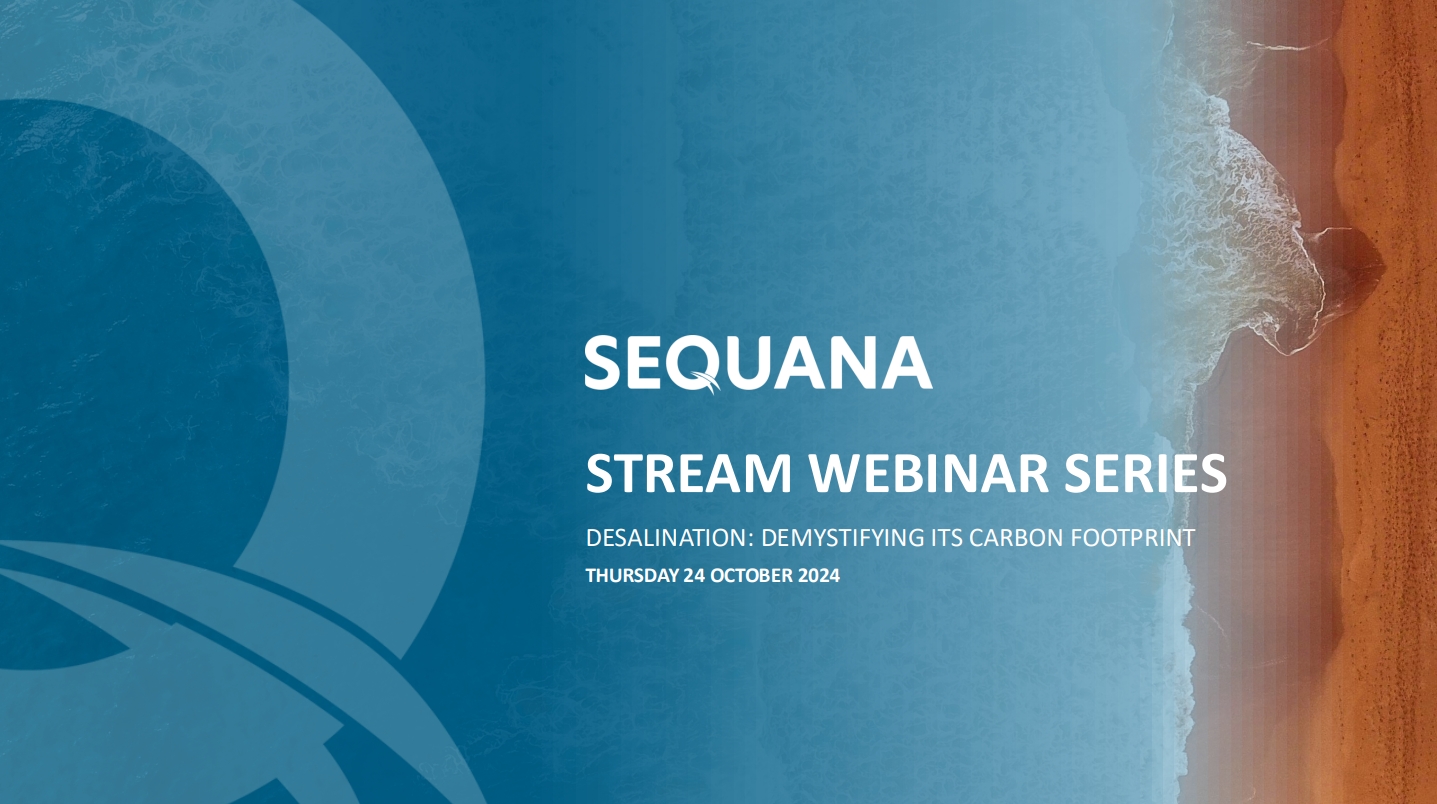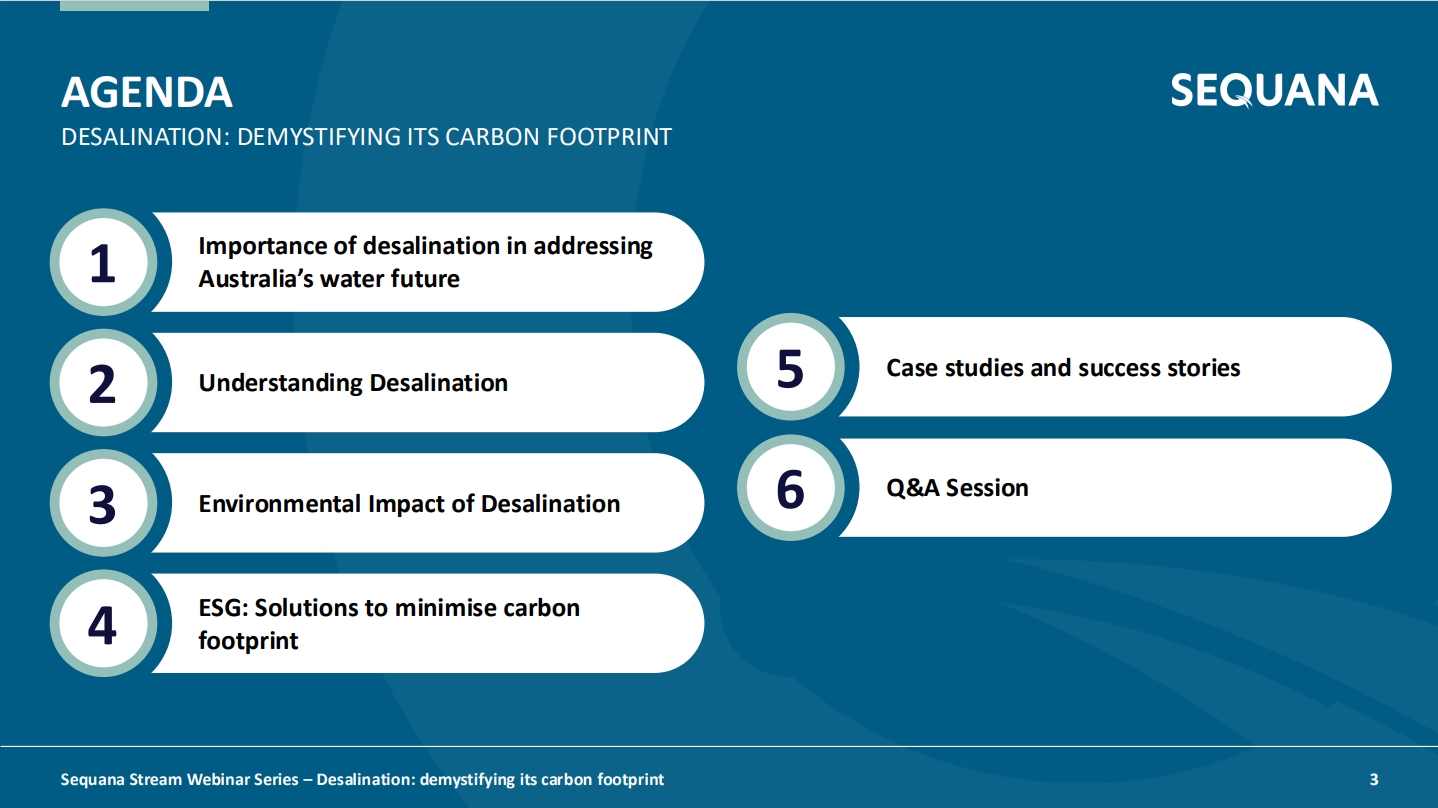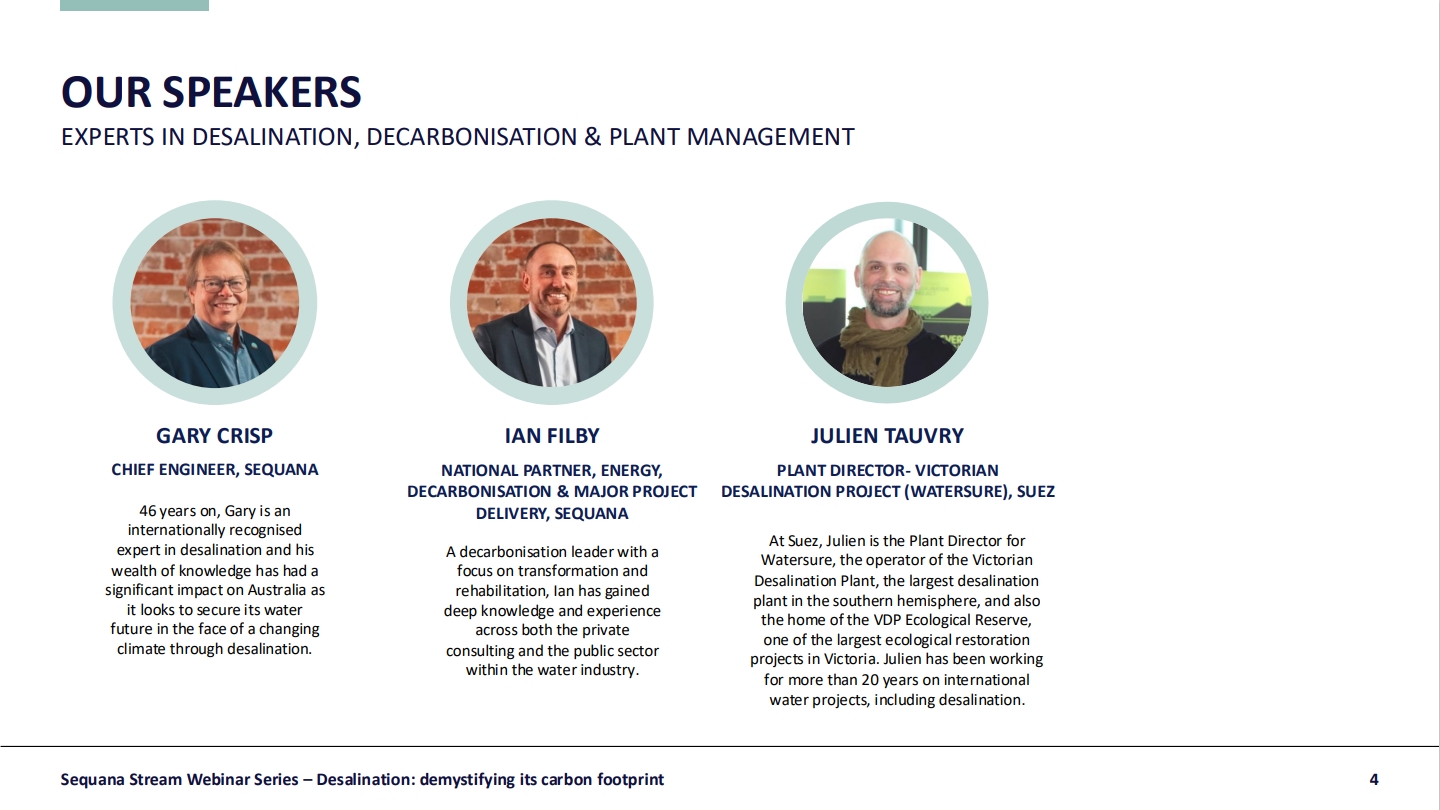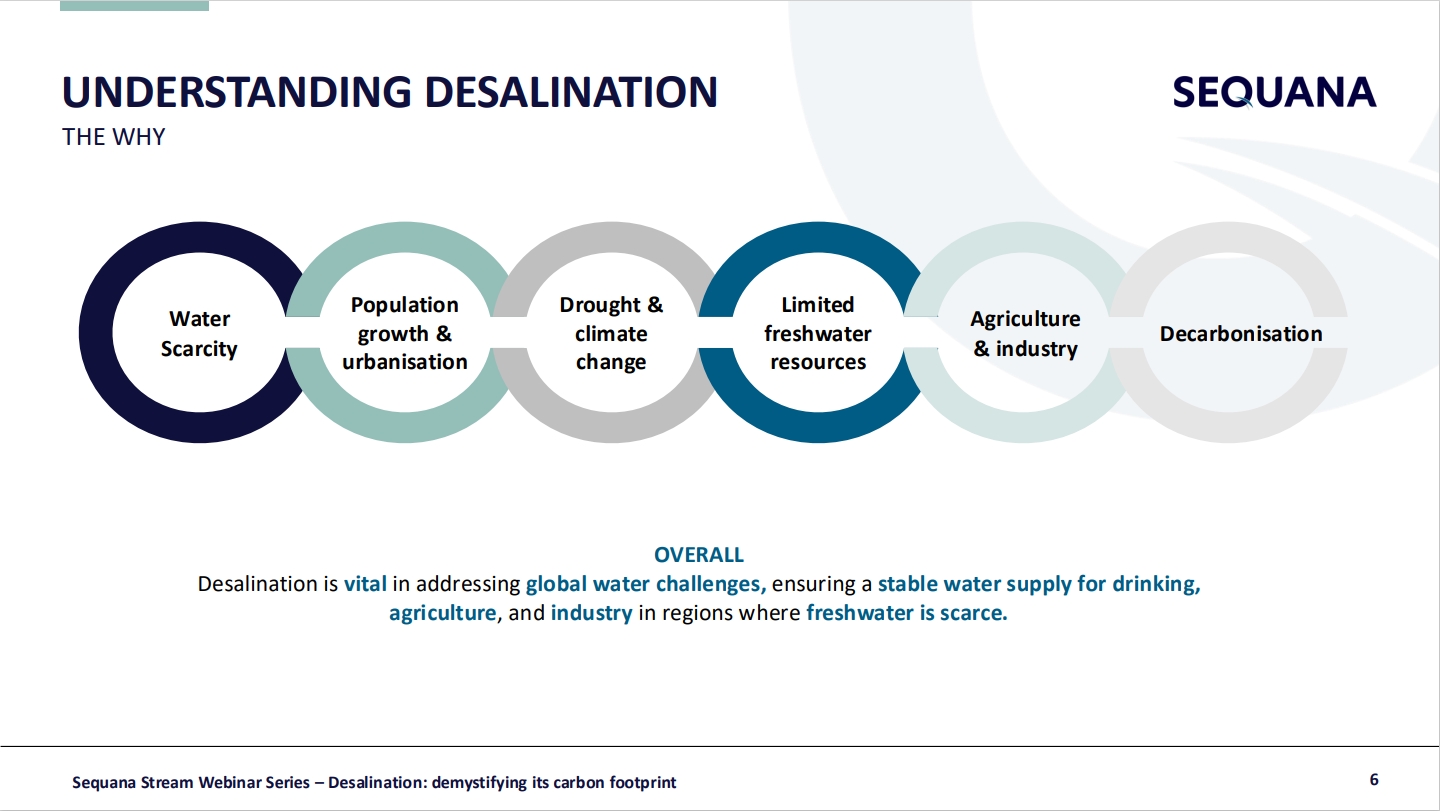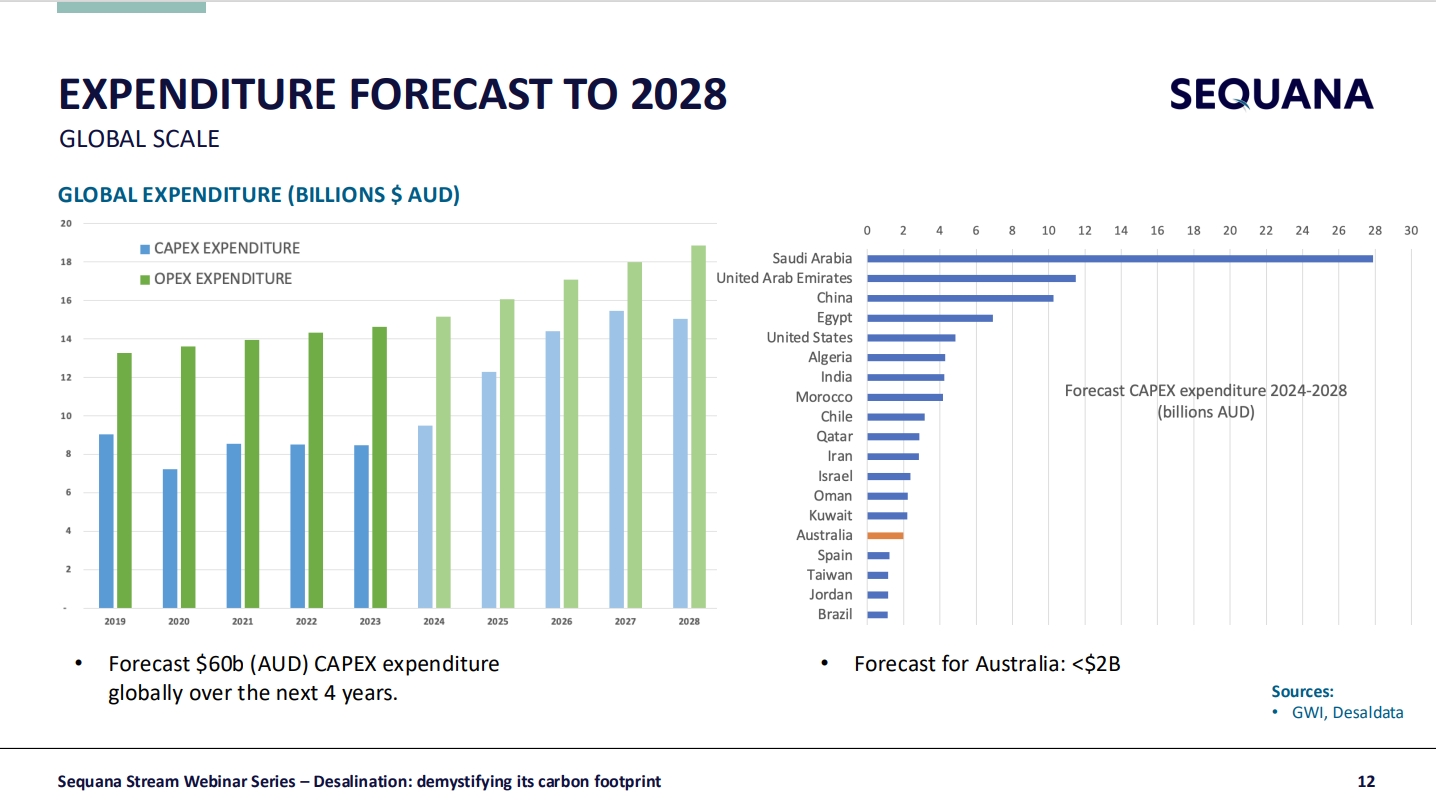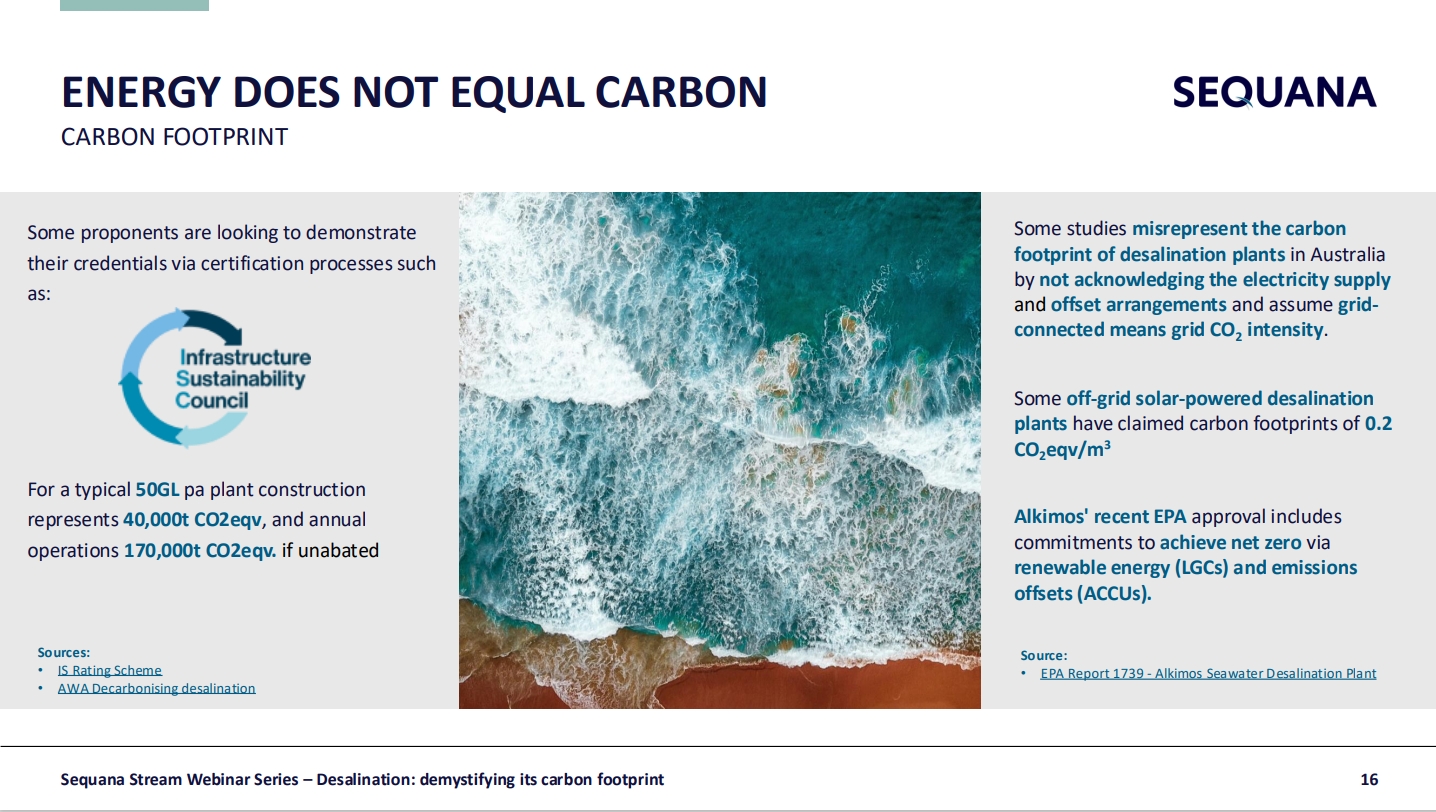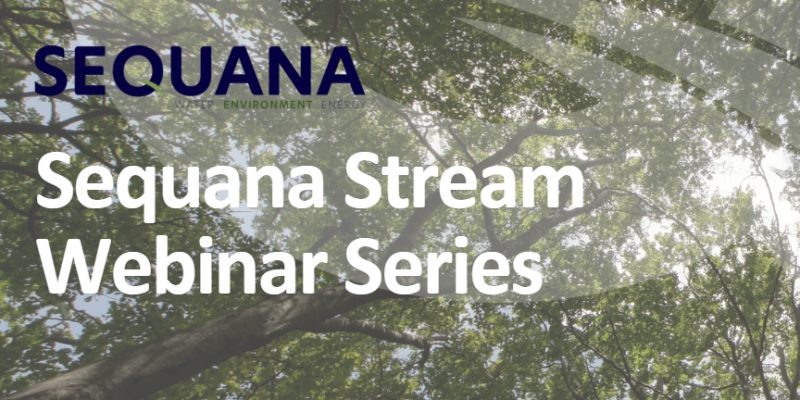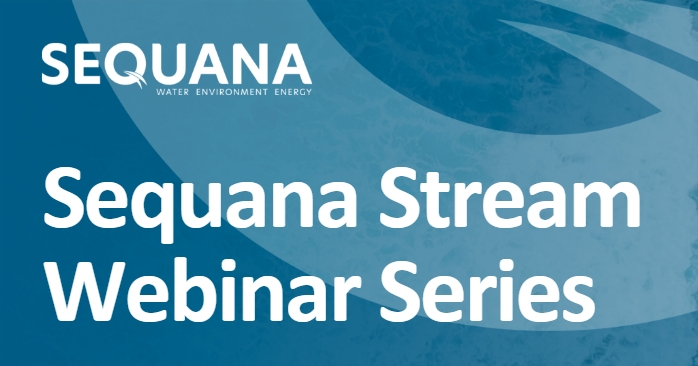As part of the Australia Water Association’s National Water Week, Sequana launched its Sequana Stream Webinar Series with a special discussion that explored the complexity of the desalination process while highlighting the ongoing efforts to reduce negative effects on the environment.
Thank you to our very own Gary Crisp, Chief Engineer, and Ian Filby, National Partner, Energy, Decarbonisation and Major Project Delivery, as well as our special guest Julien Tauvry, Plant Director- Victorian Desalination Project (Watersure), Suez, for sharing insightful data, relevant case studies and upcoming trends within the water industry in Australia.

Some insights and quotes included:
- The importance of desalination in addressing Australia’s water future by understanding what desalination is, and the increasing need for water in the country while scoping the competing market and need for these complex plants.
- Desalination and its global trends to identify how established technologies work while analysing the rise of emerging processes and the desalination expenditure forecast to 2028.
- Highlights on the environmental impact of desalination, focusing on the brine discharges, the desalination plant’s energy consumption, and its carbon footprint.
- The solutions to minimise its carbon footprint following the path of Environmental, Social and Governance (ESG). Understanding here where the energy is used in the desalination process, how to facilitate efficiency and activate renewable energy strategies and a circular economy approach (reuse, repurpose, recycle).
- Case studies and trends on new technologies or pre-treatment systems in Australia.
If you’ve missed it, you can head to the link below to download the webinar slide deck on ‘Desalination: demystifying its carbon footprint’’, watch the recording here or if you would like to know more, reach out at enquiry@sequana.co.
Desalination’s Webinar Slide Deck
Follow us on LinkedIn to stay up to date with Sequana’s news and insights.
A recording of the webinar can be viewed here.
Acknowledgement
Sequana acknowledges the Traditional Owners of Country throughout Australia and pays respect to and recognises the contribution from their Elders past and present.
#AcceleratingAction #NationalWaterWeek
